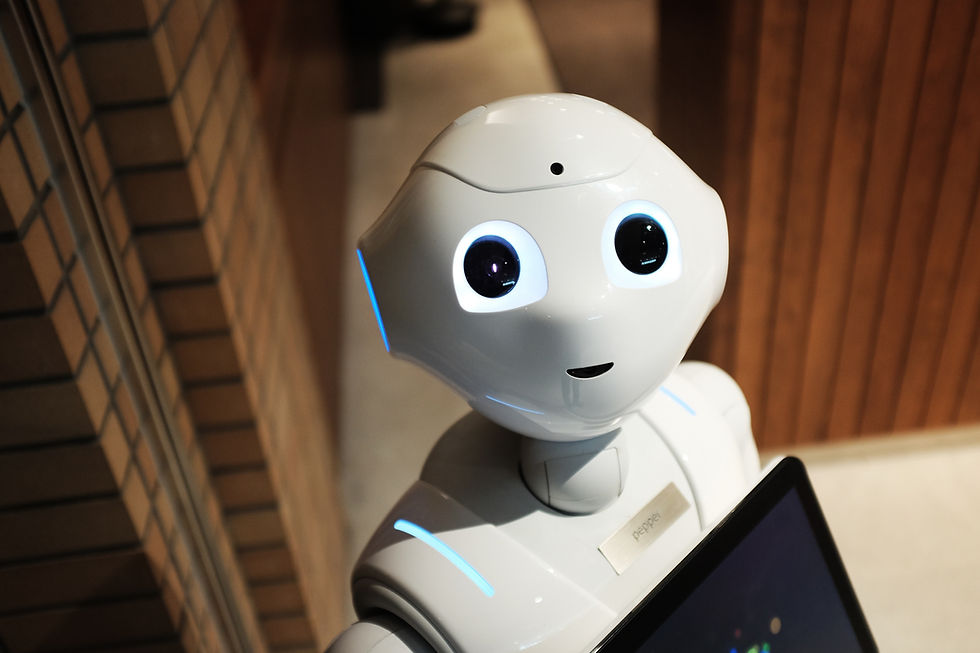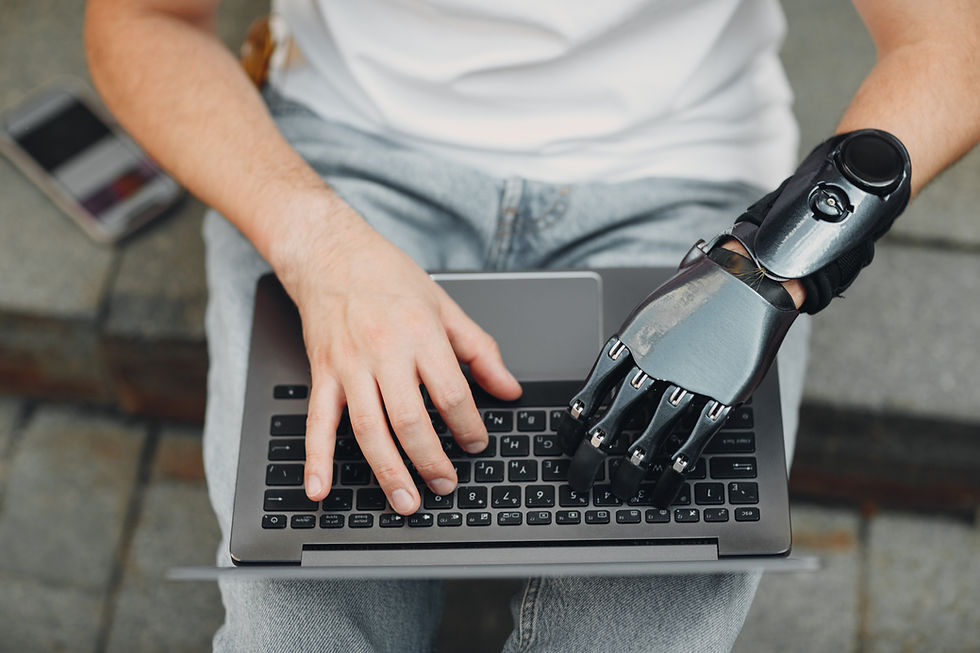Stewardship in the Age of AI: Learning, Thinking, and Working Together
- Liu Ziwei
- May 5
- 4 min read
Introduction
From social media feeds to smart homes, Artificial Intelligence (AI) is no longer science fiction—it’s shaping our present and influencing our future. Whether it’s powering medical diagnostics, automating business processes, or recommending what we watch next, AI holds massive potential to serve humanity. But it also carries risks: biased algorithms, data misuse, job displacement, and ethical gray areas. In this rapidly evolving environment, one question rises to the surface: How do we ensure that AI serves the greater good?
The answer lies in AI stewardship—a responsible, ethical, and human-centered approach to managing AI systems. This reflection offers my informed perspective on AI stewardship: I believe it is a moral responsibility rooted in transparency, collaboration, and human agency. It is not enough to understand how AI works; we must guide how it is used.
Understanding the Fundamentals of AI
At its core, AI refers to the ability of machines to perform tasks that typically require human intelligence. These tasks include pattern recognition, language processing, decision-making, and even creative outputs like music or design. Most modern AI systems rely on machine learning—algorithms that learn from data to improve their performance over time. Subfields like natural language processing (NLP), computer vision, and neural networks are foundational to what we now recognize as intelligent behavior in machines.
Despite the complexity, AI is still a tool. It does not possess emotions, moral reasoning, or awareness. It mirrors the data it is given and amplifies the intentions of its designers. This is why stewardship matters: AI can scale both wisdom and harm, depending on the human choices behind it.

Ethical Considerations: Transparency, Bias, and Human Oversight
Responsible AI development starts with recognizing the ethical issues that arise from its capabilities. Three concerns stand out to me:
Transparency: Many AI models operate as black boxes, where decisions are made without clear explanation. In high-stakes areas like hiring, policing, or healthcare, this opacity can cause real harm. AI systems must be explainable and auditable. As the European Commission’s Ethics Guidelines for Trustworthy AI suggest, transparency is vital to fostering trust and accountability.
Bias and Fairness: AI reflects the data it is trained on, and data is never neutral. Historical inequalities and societal prejudices can be embedded into AI models—sometimes in subtle ways. An algorithm trained on biased hiring data may continue to exclude qualified candidates from underrepresented groups. Ethical stewardship demands that we test for bias and commit to inclusive, representative datasets.
Human Oversight: No AI system should operate in isolation. Human review is essential for ethical checks, especially in systems that affect people’s lives. Humans must stay “in the loop” to ensure AI decisions align with values like dignity, justice, and compassion.
My Personal View: AI Needs Us—and We Need to Lead
My own view of AI stewardship is shaped by a belief in human dignity and collaboration. I do not believe AI should replace human thinking. Instead, it should support it. When we use AI as a partner, not a replacement, we create systems that are smarter and more humane.
We often hear warnings about AI taking over, replacing jobs, or leading to unintended consequences. While these are valid concerns, I don’t believe fear should guide our response. We should not be afraid of AI—we should learn about it. The more we understand, the better equipped we are to use it ethically and creatively.
Learning AI is not just a technical task; it is a moral responsibility. Every time we use AI, we face a choice: Will I use this tool to help others, or just to benefit myself? Will I ask how this system treats people from all backgrounds? Will I pause to reflect on the outcome? These choices define stewardship.
As someone working in design and digital marketing, I already see how AI tools are transforming my field—from AI-powered website builders to chatbots that enhance user experience. But tools alone don’t lead to trust. As a steward, I aim to use AI in ways that respect privacy, improve accessibility, and empower users—not manipulate or exploit them.

Calls to Action: Practicing and Leading with AI Stewardship
To move from theory to practice, I propose the following calls to action for leaders, designers, developers, and professionals engaging with AI. These are inspired by ethical reasoning, my faith in human dignity, and a belief in justice.
1. Learn Before You Deploy
“The heart of the discerning acquires knowledge.” – Proverbs 18:15Before implementing AI tools in any setting, take time to learn how they work. Understand their data sources, model limitations, and ethical risks. Ignorance is not neutral—it’s dangerous. Commit to continual learning so that your decisions are informed and responsible.
2. Build with TransparencyDesign AI systems that are explainable and open. Let users know when they are interacting with AI and offer clear information about how decisions are made. Transparency builds trust. It also invites accountability, which is essential for fairness.
3. Include Diverse Voices
AI systems should be built by and for people from all backgrounds. Invite people with different perspectives—especially marginalized voices—into conversations about desi `gn, testing, and impact. Ethical AI is inclusive AI.
4. Keep Humans in the Loop
Never outsource full control to a machine. Ensure that humans can override or question AI decisions, especially in areas affecting rights, freedom, or safety. Stewardship requires thoughtful oversight—not blind trust.
5. Use AI to Serve, Not Just Scale
Ask yourself: Who benefits from this system? Who could be harmed? Stewardship means designing AI to serve people, not just profits. Whether you’re building apps, automating processes, or analyzing behavior, use AI in a way that uplifts and protects.
Conclusion: The Future is Human-Guided
AI is not destiny—it’s design. We shape what it becomes. That’s why AI stewardship is so important. We are responsible for guiding AI with wisdom, humility, and courage. As we continue to integrate these systems into our lives, we must never forget the human values at the center of our decisions.
Being an AI steward means being proactive, not reactive. It means asking hard questions, slowing down when needed, and always choosing transparency over convenience. Most of all, it means remembering that we always have a choice—in whether and how we use AI.
The future of AI is not just about smarter machines. It’s about better humans—willing to lead, learn, and care.




Comments